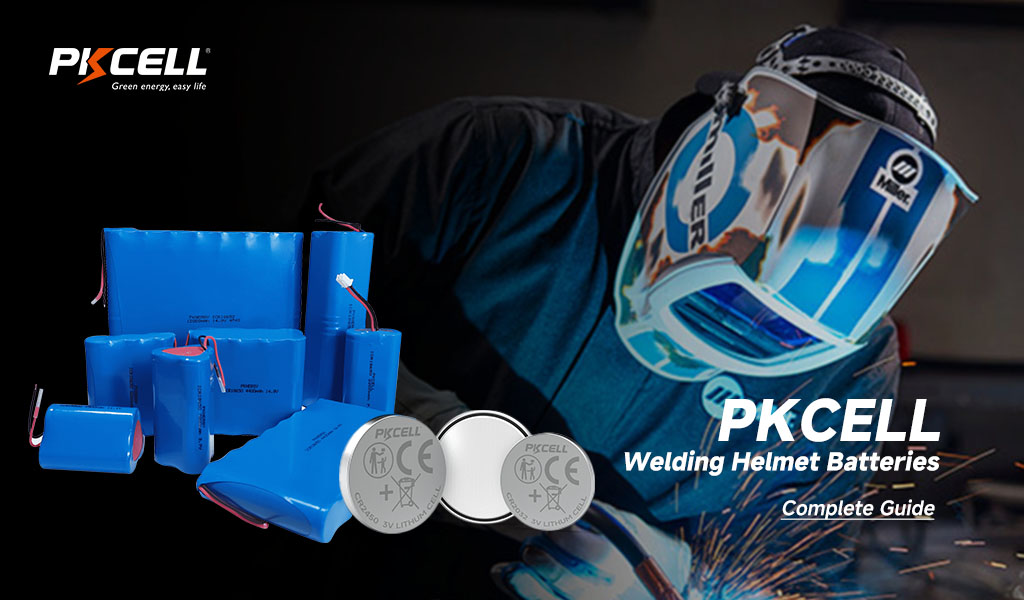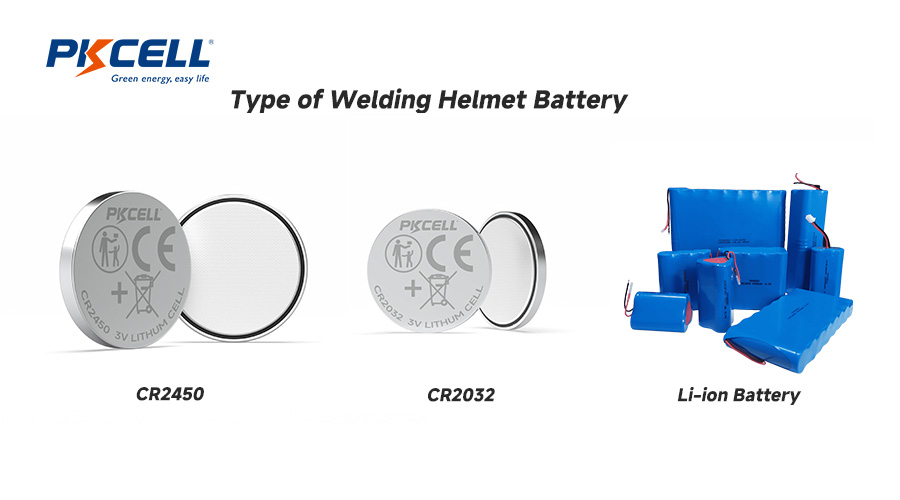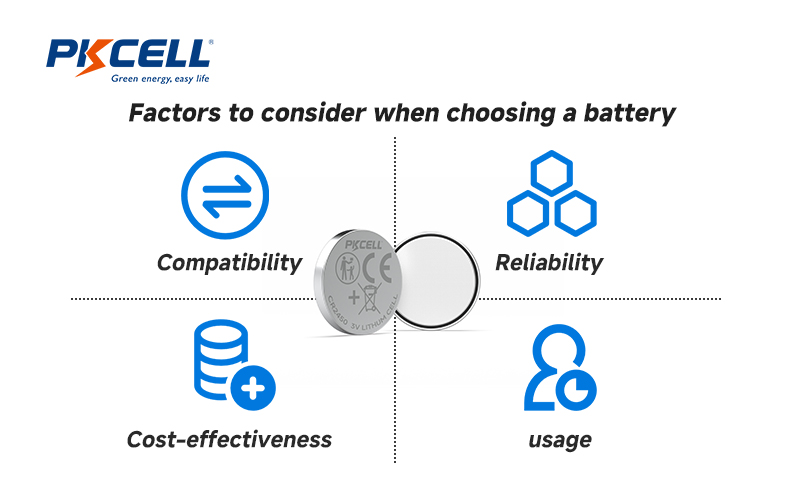Comprendre les batteries des casques de soudage
Les piles sont particulièrement importantes pour les modèles de casques de soudage à obscurcissement automatique. Elles alimentent les capteurs et les filtres, qui protègent vos yeux pendant le soudage. Si vous savez comment et quand changer les piles, votre casque fonctionnera mieux.
Pourquoi les casques de soudage nécessitent des piles
Les casques de soudage à obscurcissement automatique fonctionnent avec des piles. Ces casques utilisent différents composants électroniques pour changer automatiquement de teinte, ce qui est particulièrement important pour les soudeurs débutants. Cela permet de protéger vos yeux des lumières dangereuses. Des capteurs intégrés au casque détectent les éclairs de soudure et envoient un message à l'unité de contrôle intégrée. Les piles assurent le bon fonctionnement de tout cela.
Même les casques solaires nécessitent des batteries. L'arc de soudage produit des rayons UV et IR, ce qui permet aux casques solaires de recharger leurs propres batteries. Sans batteries, l'obscurcissement automatique ne fonctionnerait pas dès le début du soudage.
Les piles sont donc essentielles pour les casques de soudage. Sans elles, ils ne seraient pas efficaces comme équipement de sécurité. Elles permettent au casque de réagir rapidement à tout changement de luminosité, ce qui contribue à réduire la fatigue oculaire et à assurer votre sécurité.
Types de batteries couramment utilisés dans les casques de soudage
Différents types de batteries alimentent différents casques de soudage, permettant aux soudeurs de tirer le meilleur parti de leurs casques.CR2450etCR2032Les piles boutons au lithium sont parmi les plus courantes. Elles sont petites et offrent une puissance constante. Pour tous les soudeurs, il est essentiel de bien connaître les différentes options de piles afin de les remplacer à temps. Cela évite les retards lors des travaux de soudage. De plus, de nombreux casques récents intègrent des batteries rechargeables, ce qui simplifie les choses et est meilleur pour la planète. Les batteries lithium-ion réduisent les déchets et permettent une utilisation plus longue du casque entre les charges. Elles constituent donc un excellent choix pour les soudeurs professionnels ou amateurs.
Types de batteries pour casques de soudage
Piles CR2450 et CR2032
Les piles CR2450 et CR2032 sont deux piles bouton que beaucoup de gens utilisent pour les casques de soudage.CR2450convient parfaitement aux casques à obscurcissement automatique de marques telles queMeunieretLincoln ElectricIl fournit 3 V de puissance, ce qui lui permet de résister aux travaux de soudage difficiles.
LeCR2032Il est légèrement plus petit que le CR2450, mais offre une puissance élevée. Il est compatible avec des casques de marques commeOptrelet3M. Cette batterie est légère et n'ajoute pas beaucoup de poids au casque, vous pouvez donc la porter longtemps sans problème.
Voici un tableau pour comparer les deux batteries :
| Spécification | CR2450 | CR2032 |
|---|---|---|
| Tension | 3V | 3V |
| Diamètre | 24,5 mm | 20 mm |
| Épaisseur | 5,0 mm | 3,2 mm |
| Capacité typique | 600 mAh | 220 mAh |
| Poids | Plus lourd que le CR2032 | Plus léger que le CR2450 |
| Compatibilité | Miller, Lincoln Electric | Optrel, 3M |
| Usage | Travaux de soudage plus longs | Utilisation légère |
Les deux batteries se remplacent facilement. Elles se rangent dans un plateau ou un petit espace près du casque. Ces batteries durent longtemps, ce qui permet de continuer à souder sans ralentir le travail. En sachant quelle batterie est compatible avec votre casque, vous pouvez choisir les batteries de rechange adaptées et votre casque de soudage fonctionnera parfaitement et en toute sécurité.
Si vous souhaitez en savoir plus sur ces batteries, vous pouvez lire les blogs suivants :
Pile CR2450 : guide complet des spécifications, utilisations et alternatives
Guide des piles CR2032 : tout ce que vous devez savoir
Batteries rechargeables pour casques de soudage
Les batteries rechargeables, notamment les batteries lithium-ion, sont de plus en plus populaires pour les casques de soudage. Elles sont conçues pour les casques équipés de respirateurs intégrés ou d'autres composants avancés. Les batteries rechargeables constituent un meilleur choix que les anciennes piles boutons.
Les soudeurs bénéficient d'une autonomie plus longue et produisent moins de déchets. Il suffit de recharger les batteries et de les réutiliser. Cela simplifie les choses et permet de faire des économies, ce qui est appréciable lorsque vous utilisez votre casque fréquemment. Les batteries lithium-ion conservent également bien leur charge, même en cas d'utilisation fréquente.
Contrairement aux piles jetables comme les CR2450 ou CR2032, les piles rechargeables nécessitent une attention particulière. Assurez-vous qu'elles soient bien adaptées à votre casque et prenez-en soin. Suivez les conseils d'entretien appropriés pour une durée de vie et un fonctionnement optimal de votre pile.
Choisir la bonne batterie pour votre casque de soudage
Facteurs à prendre en compte lors du choix d'une batterie
Choisir la bonne batterie pour votre casque de soudage implique de prendre en compte quelques éléments importants :
- Compatibilité:Assurez-vous que la batterie correspond aux spécifications du fabricant. Cela vous permettra d'éviter tout problème de fonctionnement.
- Usage:Si vous soudez souvent, choisissez des batteries qui durent plus longtemps, comme les batteries lithium-ion rechargeables. Elles peuvent être très utiles pour ceux qui soudent souvent.
- Fiabilité:Optez pour des marques qui ont une bonne réputation, commePKCellDe cette façon, vous savez que la batterie fonctionnera à chaque fois pour assurer votre sécurité pendant le soudage.
- Rapport coût-efficacité :Les piles rechargeables peuvent coûter plus cher au départ, mais vous économiserez plus tard. Pour faire des économies dès le départ, vous pouvez opter pour des piles boutons.
Choisir le bon type de piles, comme les CR2450 ou les piles lithium-ion, contribuera au bon déroulement de votre soudage. Il est évident qu'avoir de bonnes piles de rechange à portée de main est un atout majeur pour tout soudeur.
Signes indiquant que la batterie de votre casque de soudage doit être remplacée
Il est important de savoir quand changer la pile de votre masque de soudage pour qu'il fonctionne toujours correctement. Soyez attentif aux signes suivants :
- Vision faible :Si votre lentille à obscurcissement automatique ne change pas lorsqu'il y a plus ou moins de lumière, votre batterie est peut-être faible ou usée.
- Alerte batterie :De nombreux casques sont équipés de voyants LED qui vous permettent de savoir quand la batterie est faible.
- Durée de vie de la batterie courte :Si vous devez la charger ou la changer plus souvent qu’avant, la batterie est probablement usée.
- Pas d'assombrissement automatique :Si l'objectif ne s'assombrit pas, la batterie est peut-être trop faible pour faire fonctionner cette partie.
Changer la batterie régulièrement permet à votre masque de soudage de fonctionner correctement et de protéger vos yeux pendant le soudage. En réglant ces problèmes de batterie sans tarder, vous éviterez toute interruption de travail et pourrez poursuivre vos activités. Le remplacement de la batterie est essentiel pour tout utilisateur de masque de soudage.
Conclusion
Les batteries pour casque de soudage jouent un rôle essentiel dans votre sécurité et le bon fonctionnement de votre casque pendant vos opérations de soudage. Il existe différents types de batteries, comme les CR2450, les CR2032 et certaines rechargeables. Connaître ces types de batteries vous aidera à choisir celle qui convient le mieux à votre casque. Pensez à son autonomie, à sa compatibilité avec votre casque et aux signes avant-coureurs de son remplacement. Choisir la bonne batterie peut améliorer le fonctionnement de votre casque et contribuer à votre sécurité. En cas de doute sur la batterie la mieux adaptée à votre casque ou de questions concernant le remplacement de la batterie, n'hésitez pas à nous contacter.consultation gratuite.
Pourquoi choisir PKCELL pour l'alimentation en batterie du casque de soudage ?
PKCELL est un excellent choix pour vos batteries de casque de soudage. Nous proposons des batteries fiables et durables comme les CR2032 et CR2450. Forts de plus de 20 ans d'expérience, nous proposons des batteries conçues pour offrir stabilité, longévité et recharge rapide, garantissant le parfait fonctionnement de votre casque en cas de besoin. Nos batteries sont conformes aux normes internationales telles que ISO9001, CE et RoHS, vous garantissant ainsi une qualité et des performances fiables. Que vous soyez distributeur ou industriel, PKCELL propose des batteries durables et abordables pour votre sécurité pendant le soudage.Contactez-nous dès aujourd'hui!
Questions fréquemment posées
Quelle est la durée de vie moyenne des batteries des casques de soudage ?
La durée de vie des batteries des casques de soudage dépend de leur fréquence d'utilisation et de leur type. Les piles CR2450 jetables peuvent durer environ trois à quatre mois si vous utilisez votre casque fréquemment. Les batteries lithium-ion rechargeables dureront des années si vous en prenez soin. Certains casques de soudage fonctionnent à l'énergie solaire. Ces casques utilisent des rayons UV pour prolonger la durée de vie de la batterie.
Puis-je remplacer la batterie de n’importe quel casque de soudage à obscurcissement automatique ?
La plupart des masques de soudage à obscurcissement automatique permettent de remplacer la pile, surtout s'ils utilisent des piles CR2450 ou CR2032. Cependant, certains masques fonctionnent à l'énergie solaire et ont des piles scellées. Dans ce cas, la pile ne peut pas être retirée. Pour savoir quel type de masque vous utilisez, consultez le manuel d'utilisation de votre masque ou le guide du fabricant. Ils vous indiqueront également comment changer la pile si elle est amovible.
Les batteries rechargeables sont-elles meilleures que les batteries non rechargeables pour les casques de soudage ?
Les batteries rechargeables, comme celles au lithium-ion, durent longtemps et sont plus respectueuses de l'environnement. Elles sont utiles pour les soudures fréquentes. Les batteries non rechargeables, comme les CR2450, sont moins chères et plus adaptées aux soudures occasionnelles. Le meilleur choix dépendra de votre fréquence de soudage, de votre budget et de la compatibilité du casque que vous utilisez avec la batterie.
Puis-je utiliser des piles rechargeables dans mon casque de soudage ?
Oui, de nombreux casques de soudage sont compatibles avec les batteries rechargeables. Leur utilisation est pratique et économique, permettant une utilisation répétée sans remplacements fréquents. Cependant, vérifiez toujours les spécifications du fabricant pour vous assurer de la compatibilité et des performances optimales avec votre modèle de casque de soudage avant de changer de modèle.
Date de publication : 23 juin 2025








